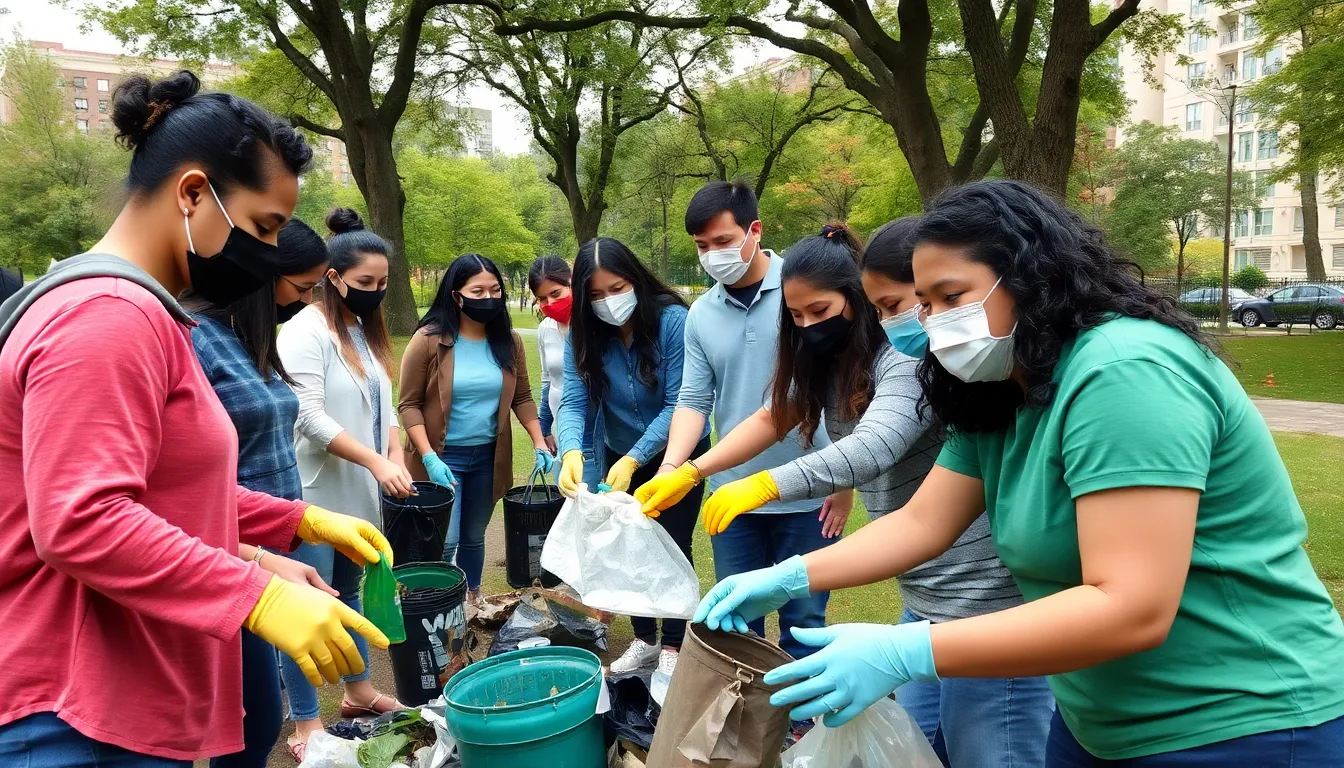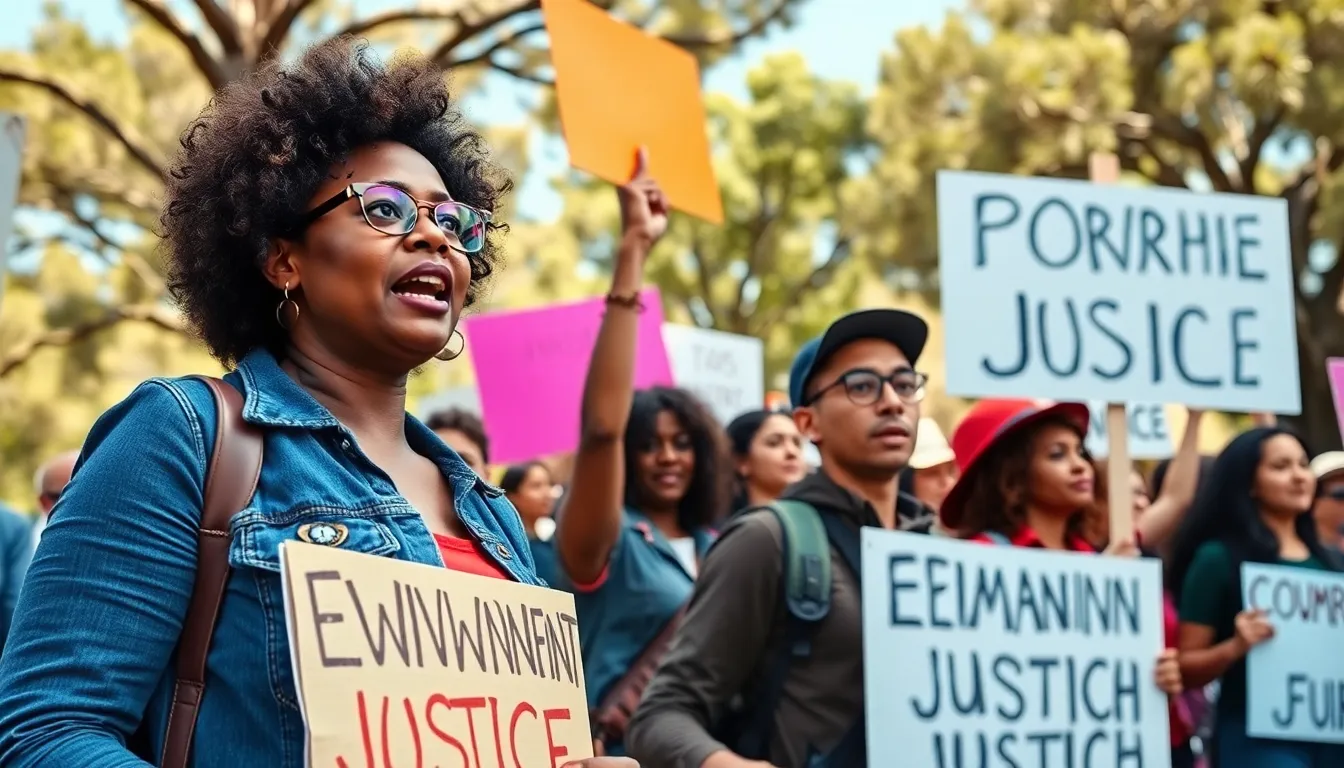In a world where the air we breathe and the water we drink can be as polluted as a reality TV show plot twist, environmental justice news is more crucial than ever. It’s not just about saving the planet—it’s about ensuring everyone gets a fair shot at a clean, healthy environment. From grassroots movements to groundbreaking legislation, the fight for environmental equity is heating up faster than a barbecue on a summer day.
Stay tuned as we dive into the latest updates and stories that highlight the intersection of social justice and environmental issues. Whether it’s communities rallying for cleaner air or activists challenging corporate giants, these stories pack a punch. After all, who wouldn’t want to be in the loop about the latest battles being fought for a greener, fairer future?
Table of Contents
ToggleRecent Developments in Environmental Justice News
Recent events highlight the growing focus on environmental justice. New policies and community efforts strive for a more equitable environment.
New Policies and Legislation
Several states introduced comprehensive legislation aimed at reducing environmental disparities. California’s Senate Bill 1000 mandates that cities incorporate environmental justice into their general plans. Northeastern states proposed new air quality regulations to protect vulnerable populations from pollution. The Biden Administration allocated $3 billion from the Inflation Reduction Act for environmental justice initiatives. This funding targets disadvantaged communities, focusing on clean energy projects. Various federal agencies released guidelines to enhance environmental review processes, ensuring marginalized voices are considered.
Community Actions and Responses
Grassroots organizations played a vital role in raising awareness about local environmental issues. In Chicago, residents organized a rally opposing a new waste facility in their neighborhood. Activists in Houston launched campaigns for cleaner air, urging local leaders to address industrial emissions. Additionally, communities across the nation mobilized to protest against toxic waste dumping in predominantly low-income areas. These actions fostered collaboration between residents and policymakers, reinforcing the importance of inclusive dialogue in environmental decision-making.
Case Studies on Environmental Justice

Case studies illustrate how environmental justice initiatives successfully impact communities. They highlight both achievements and ongoing obstacles.
Success Stories
California led the way with comprehensive legislation promoting environmental equity. Communities impacted by pollution benefited from Senate Bill 1000, which mandates cities to consider environmental justice in their planning. Residents in the Los Angeles area organized a local cleanup initiative that improved air quality. In Chicago, grassroots efforts raised awareness about lead contamination in water, resulting in policy changes. The Biden Administration’s allocation of $3 billion from the Inflation Reduction Act targeted infrastructural improvements for disadvantaged neighborhoods. Other states, like New York, launched similar initiatives, reducing pollution levels in low-income areas.
Ongoing Challenges
Despite notable successes, challenges persist in achieving environmental justice. Many regions still experience high levels of pollution affecting health outcomes. Economic disparities hinder access to resources aimed at mitigating environmental issues. Communities of color frequently face systemic obstacles when voicing concerns about local hazards. Activists in Houston highlight the ongoing struggle against industrial facilities, which disproportionately impact marginalized neighborhoods. Reports indicate that communities in midwestern states remain vulnerable to environmental degradation. Mobilization efforts continue as individuals seek to hold authorities accountable for inequitable practices.
The Role of Activism in Environmental Justice News
Activism plays a crucial role in the fight for environmental justice, amplifying the voices of communities affected by pollution and inequality.
Grassroots Movements
Grassroots movements often serve as the backbone of environmental justice efforts. Citizens in cities like Chicago and Houston organize rallies, fostering community engagement to address local issues. These groups raise awareness about the disproportionate impacts of pollution on marginalized communities. Recent initiatives focus on educational campaigns that empower residents to take action. Active participation in local government meetings helps ensure that community concerns are heard. Success stories emerge from these efforts, showcasing improved air quality and policy changes. Individuals often come together, motivated by the shared goal of creating a healthier environment for everyone.
Influence on Policy Change
Activism significantly influences policy change related to environmental justice. Legislative efforts gain momentum as grassroots organizations advocate for comprehensive laws aimed at reducing environmental disparities. In California, Senate Bill 1000 requires cities to integrate environmental justice into their general planning processes. This legislation represents a commitment to equitable access to clean air and water. Federal initiatives, such as the Biden Administration’s allocation of $3 billion, focus on supporting disadvantaged communities. Activists persistently lobby for such policies, holding decision-makers accountable. Continued advocacy often leads to the implementation of measures that address systemic inequalities faced by marginalized populations.
The Impact of Climate Change on Marginalized Communities
Climate change disproportionately affects marginalized communities, exacerbating existing vulnerabilities. High pollution levels lead to severe health effects, including asthma and cardiovascular diseases, particularly in low-income neighborhoods. Increased weather extremes, such as hurricanes and flooding, cause immediate and long-lasting damage, leaving these communities with fewer resources to cope.
Rural areas often experience inadequate infrastructure, making it harder to recover from climate-related disasters. Urban neighborhoods face similar challenges, where proximity to industrial sites undermines air quality. Economic disparities limit access to emergency services, healthcare, and clean water, essential during environmental crises.
Recent studies reveal that communities of color endure higher exposure rates to toxic pollutants. They confront systemic obstacles that impede their ability to advocate for environmental protections. Activists in cities like Flint and New Orleans work tirelessly to raise awareness and implement change, often drawing national attention to critical issues.
Research indicates that grassroots organizations have played a crucial role in mobilizing residents for action. These groups amplify the voices of impacted individuals, ensuring their concerns reach policymakers. Legislative efforts, such as California’s Senate Bill 1000, aim to integrate environmental justice into city planning, promoting equitable solutions.
Ongoing activism fosters resilience, empowering communities to negotiate for cleaner environments and better health outcomes. Collaboration among local residents and organizations is essential for tackling climate change’s impacts effectively. Communities must remain engaged, advocating for policies that prioritize equitable treatment and accessibility to resources in the face of climate challenges.
The movement for environmental justice is gaining momentum as communities unite to address pressing issues. With legislative advancements and grassroots activism, there’s a renewed commitment to ensuring that all individuals have access to a clean and safe environment.
While progress has been made in some areas, significant challenges remain. Marginalized communities continue to face systemic barriers that hinder their ability to advocate for change.
Ongoing efforts from activists and organizations highlight the critical need for sustained attention to these disparities. As awareness grows, so does the potential for meaningful change that prioritizes equity and justice for all.


